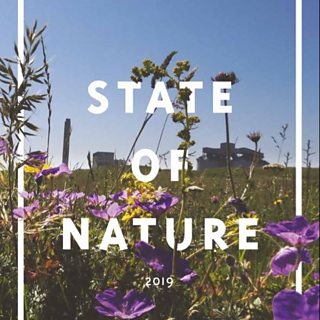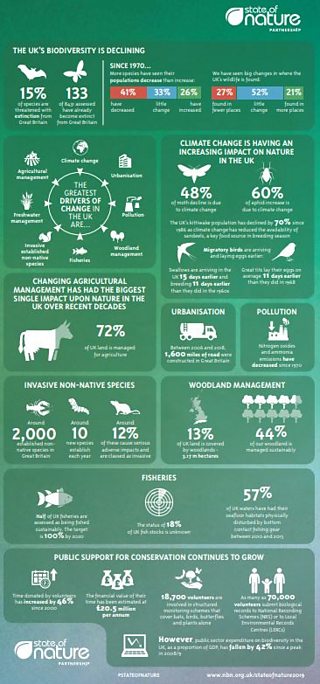Blog by Dr Daniel Hayhow, RSPB Conservation Scientist and lead author of State of Nature 2019 report
At the beginning of autumn we launched the , a report using the best available data on the UK’s biodiversity, which forms the evidence for how nature is faring.
We are very lucky in the UK as we have a wealth of knowledge and monitoring for wildlife, so there was a lot of data for us to analyse. The State of Nature report would not exist were it not for the contribution from the staggering 70, 000 people who voluntarily collect data for national recording schemes or local record centres and other 19, 000 who take part in structured monitoring. In this report we were able to present trends in status for more species than ever before (nearly 7000 species), thanks to new datasets becoming available and the development of analytical tools which enable a much broader range of taxonomic groups to be represented.

The report shows that there has been no let-up in the net loss of nature in the UK. Our statistics demonstrate that the abundance and distribution of the UK’s species has, on average, declined since 1970 and this decline has continued in the most recent decade. These declines, which we are able to quantify, come against a backdrop of centuries of depletion of the UK’s wildlife from persecution, pollution, habitat loss and degradation prior to the 1970s.
This is the third State of Nature report and as well as updating and expanding the data we also decided to dig a bit deeper into the drivers of change including agricultural management, climate change, urbanisation, pollution, hydrological change, invasive non-native species and woodland management.
But it’s not all bad news. We were able to include a range of case studies about conservation actions that are working to help nature recover.
And of course, the most wonderful thing is that people are increasingly aware of the need to do more to protect biodiversity: public support is rising and can help drive changes to both policy and practices, which in turn can help stem the damage.
The State of Nature report is produced by a partnership which includes almost 80 conservation organisations that truly represent the environmental sector. There are specialist recording societies with expertise on our best and least known wildlife, research organisations responsible for gathering and analysing data, conservation charities that take action for wildlife and habitats and for the first time the nature conservation bodies for the UK and it’s four countries.
The report is over 100 pages long, which is great to get the detailed story, but we have also produced infographics and shorter summaries (for the UK but also for each of the 4 countries). It’s full of numbers and there’s certainly a lot to read but if you want to know how wildlife is doing in the UK, State of Nature is the place to find your answers.
Read more about State of Nature 2019 at
Follow the conversation on social media #stateofnature

